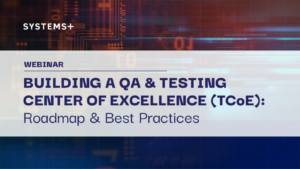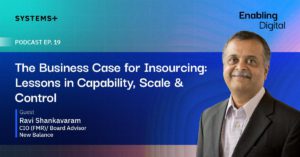Posted : October 9th, 2024
Author : Irfan Shaikh, Project Manager at Systems Plus
This blog offers a roadmap to effectively manage transitions and implement changes with minimal disruption. It provides insights on engaging stakeholders, fostering clear communication, and providing continuous support, ensuring that changes are smoothly integrated and fully embraced. By mastering the essential elements of Change Management (CM), organizations can instill resilience, drive innovation, and achieve long-term success in a rapidly evolving business environment.
Understanding Change Management
Change management is the systematic process of introducing and implementing changes within an organization. It involves planning, executing, and monitoring changes to ensure they are successfully adopted and integrated into the existing systems and processes. Effective change management aligns organizational activities with new strategies, processes, or technologies, ensuring that transitions are smooth and that changes are successfully adopted.
Benefits of Streamlined Change Management
A streamlined CM process brings numerous benefits to an organization, including:.
- Increased Efficiency: Streamlined processes help reduce disruptions and improve overall efficiency.
- Enhanced Customer Satisfaction: Successful change implementation leads to better products, services, and customer experiences.
- Reduced Risk: A well-planned CM process helps to mitigate risks associated with change, such as project delays or financial losses.
- Increased Productivity: By minimizing resistance and confusion, streamlined change can boost team productivity.
Key Stages of Change Management
1. Change Identification and Request
- Identify the need for change: Recognize the problem or opportunity that requires a change.
- Raise a change request (RFC- Request for Change): Document the change details, including the reason, scope, impact, and resources required.
- Initial evaluation: Assess the RFC to determine its validity, feasibility, and potential impact.
- Categorize and prioritize the change: Based on impact and urgency, categorize the change and prioritize it. For instance:
Standard: Everyday small changes with low risk and low impact.
Normal: Significant yet common types of change, often made up of multiple standard changes.
Emergency: Extremely high priority, ‘drop-everything-and-do-it’ kind of change. Something is probably on fire!
2. Change Planning
- Risk assessment: Analyze the risks associated with the change and develop mitigation strategies.
- Impact analysis: Evaluate how the change will affect systems, processes, and stakeholders.
- Develop a change plan: Outline the steps required to implement the change, including timelines, resources, and responsibilities.
- Prepare a rollback plan: Develop a contingency plan in case the change fails or needs to be reverted.
- Obtain initial approval: The initial approver will approve, reject, or request further information/ modifications to the change request.
3. CAB (Change Advisory Board) Review and Approval
- Submit the RFC to the CAB: Present the change along with the change plan, risk assessment, and impact analysis to the CAB.
- CAB review: The CAB, consisting of stakeholders from various departments, reviews the change request for its technical and business implications.
- Approval or rejection: The CAB either approves, rejects, or requests further information or modifications to the change request.
4. Change Implementation
- Schedule the change: Based on the CAB’s approval, schedule the change implementation.
- Communicate the change: Inform all relevant stakeholders about the change, including the implementation timeline and expected impact.
- Implement the change: Execute the change according to the approved plan, ensuring that all steps are followed.
- Monitor the change: Track the implementation process and evaluate any deviations or issues.
5. Post-Implementation Review and Closure
- Verify and review the change: Ensure that the change has been implemented as planned and compare the actual results with the expected outcomes.
- Gather feedback: Collect feedback from stakeholders to identify any issues or improvements.
- Close the change request: Once the change is confirmed to be successful, formally close the RFC in the system and inform the stakeholders.
- Update documentation: Ensure all related documentation, including system configurations, user manuals, and support guides, are updated.
Tips for Optimizing Change Management
- Engage Stakeholders Early On: Involve key stakeholders from the beginning to gain their insights and support.
- Clear Communication: Maintain transparent, consistent, and open communication throughout the change process.
- Provide Training: Equip employees with the necessary skills and knowledge to adapt to the change.
- Monitor and Adjust: Regularly assess the progress of the change and be ready to adjust as needed.
- Celebrate Successes: Recognize and celebrate milestones and achievements to reinforce positive outcomes and maintain momentum.
Conclusion
Mastering change management is essential for any organization looking to adapt to evolving business environments. By following the key stages and best practices outlined in this guide, you can effectively manage change, minimize disruptions, and achieve your organizational goals.
To evaluate and examine your change management maturity, you can take the Change Management Assessment and get your unique score along with a practical plan-of-action. Alternatively, you can also connect with our CM experts for a detailed consultation.






